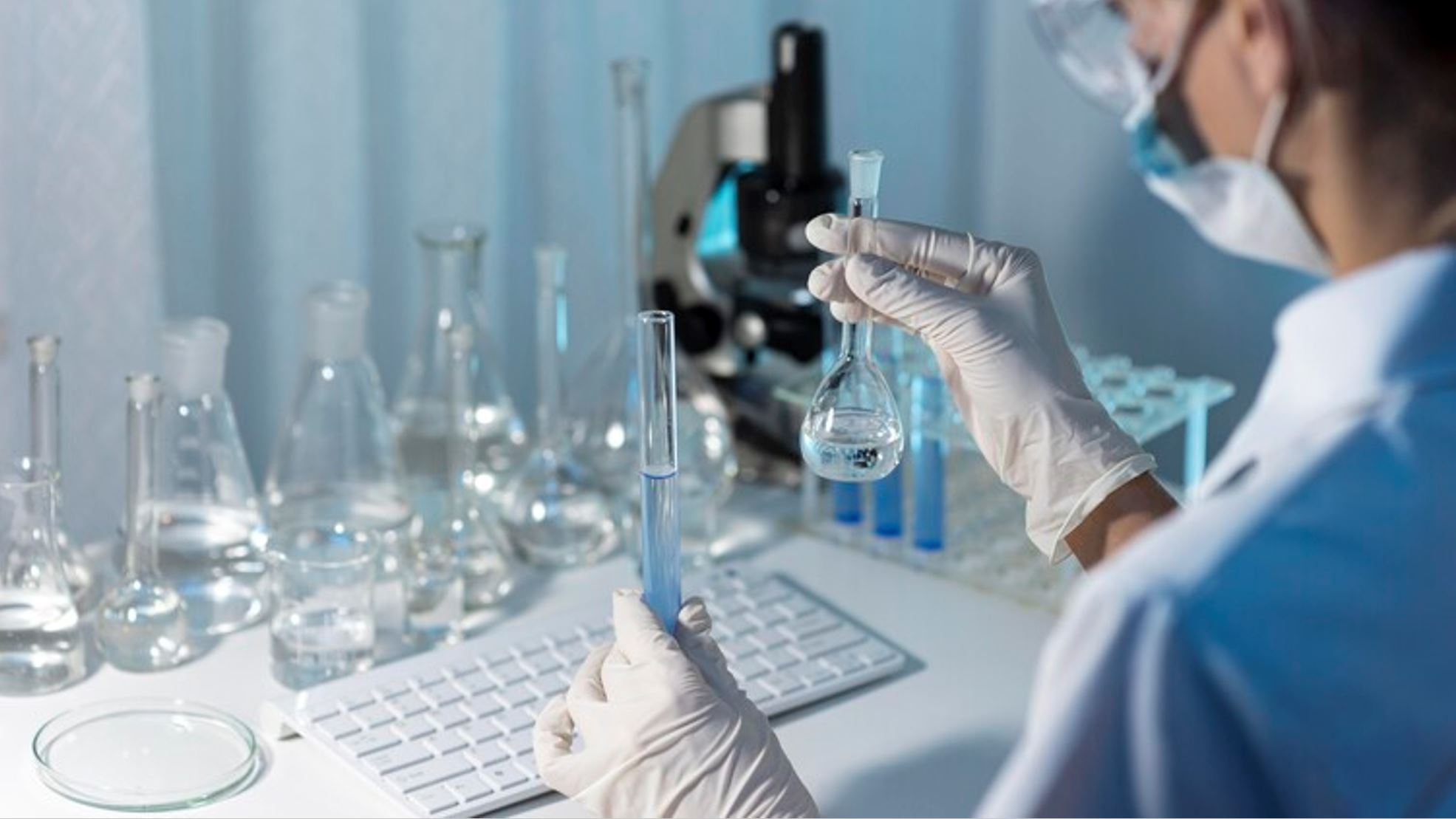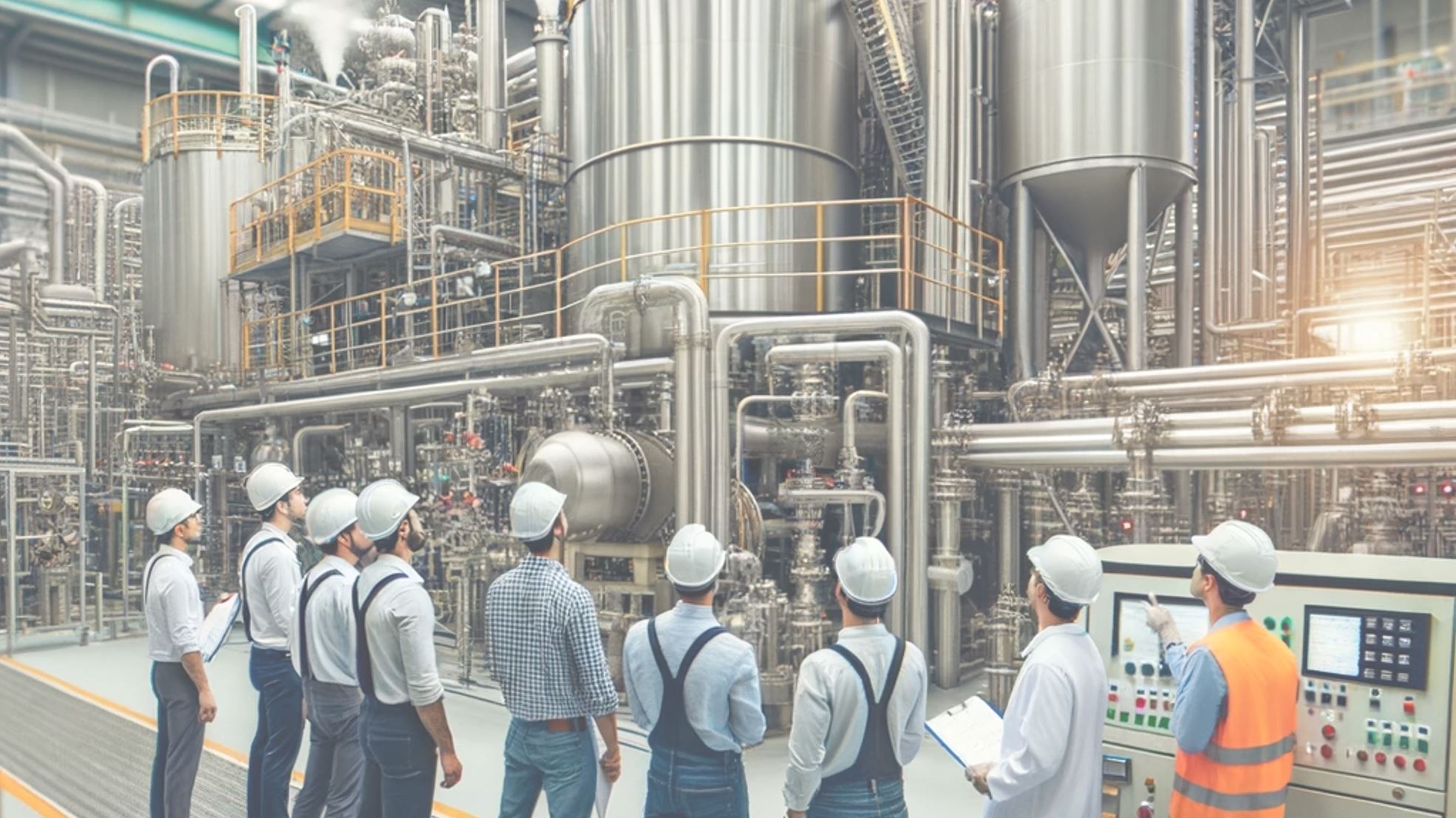

An industrial heat pump (IHP) is a large-scale device designed to capture and repurpose heat from various sources for industrial applications. They, not a new technology, have been developed and commercialized since the 1980s. However, their adoption stalled in North America due to the of cheap natural gas.
Heat pumps are related to the thermodynamic principle known as the Carnot Cycle. A heat pump uses a reversed Carnot Cycle to move heat in the opposite direction, from a cold space to a warm space, by doing work. (1)
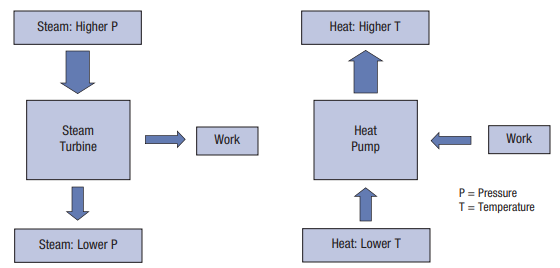
The efficiency of a heat pump is not described in terms of thermal efficiency (as with heat engines) but by its “Coefficient of Performance (COP) –> the ratio of heat output to the work input”. The COP of a heat pump is always greater than 1, meaning that a heat pump transfers more heat than the work put into it. IHPs are used to capture low-grade waste heat and upgrade it to provide space or district heating, or for other industrial uses.
Fossil fuel-driven processes approximately lose about 10% of their heat to the environment, meaning 110% of the required heat is used. After usage, this heat, at too low a temperature for reuse, is entirely released into the ambient. In contrast, heat pump systems reduce waste heat to 25% of the demand. They reuse 75% of this waste heat by elevating its temperature, delivering 100% process heat while using only 25% electricity, achieving a 4 times efficiency. This efficiency, termed the coefficient of performance (COP), ranges from 2 to 5, varying with waste and process heat temperatures. (2)
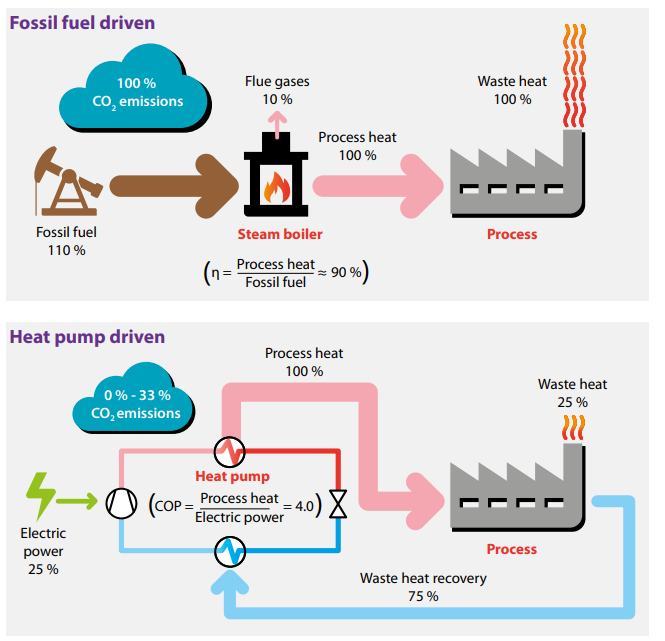
IHPs could cut energy use associated with process heat by up to one-third. By using electricity generated from low-carbon sources (wind, solar, and hydropower), IHPs could facilitate the shift away from carbon-intensive fossil fuels.
TRLs of IHPs vary depending on the specific technology and application. The below table show the summary of TRLs of IHPs (4)
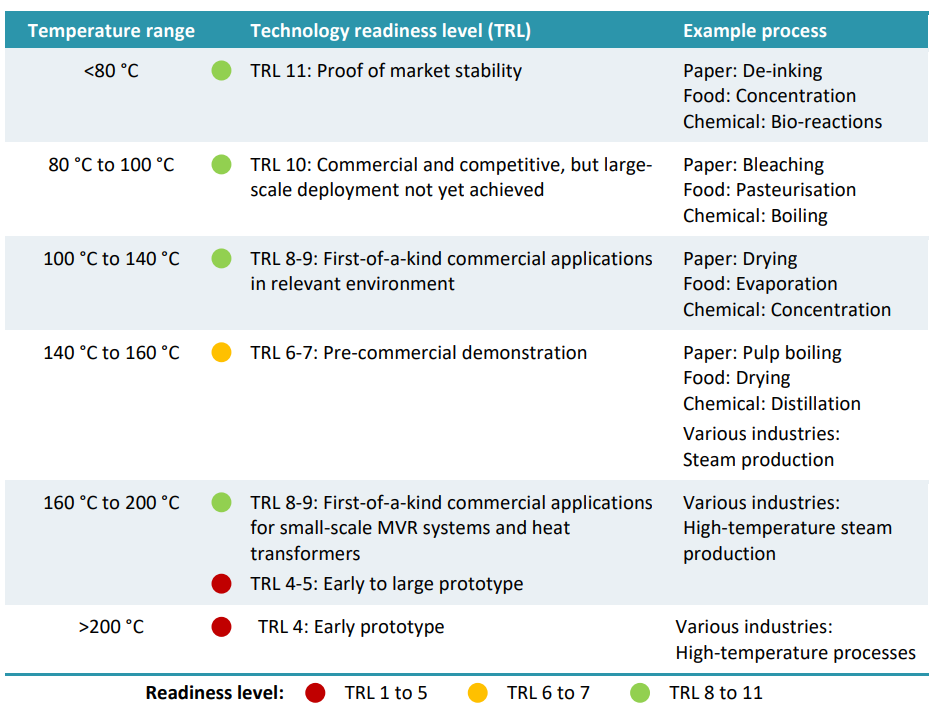
The global industrial heat pump market is expected to grow considerably during the forecast period between 2023 and 2030. The industrial heat pump market size exceeded USD 1.4 billion in 2023 and is expected to depict a 5.5% CAGR from 2024 to 2032. (5)
The market is segmented based on temperature ranges, with categories including
The largest segment is below 70°C, which holds over 60% of the market share. Europe is the largest market for industrial heat pumps, with a share of about 40%, followed by China and North America, which together hold over 45% of the market share. (6)
Some of the key players operating in the heat pump market include Carrier, Daikin Industries, Ltd, Robert Bosch GmbH, Lennox International, Johnson Controls, Inc., Midea Group, Hitachi, Ltd., and Ingersoll Rand Plc. (7)
Industrial heat pumps (IHPs) work by extracting waste heat from one source and transferring ti high-grade heat often achieving a coefficient of performance (COP) around 4 (3-5 times). The TRLs of IHPs varying depend on temperature applications. it is hard to inplement such as difference of industrial heat demands, high upfront costs, etc. The market trends for IHPs show considerable growth, with Europe being the largest market, followed by China and North America.
The views and opinions expressed in this Linkedin article are solely my own and do not represent the views or opinions of my current employer. This article is a personal reflection and does not involve any proprietary or confidential information from my current company. Any similarities in ideas or concepts presented in this article to my current company’s work are purely coincidental.



